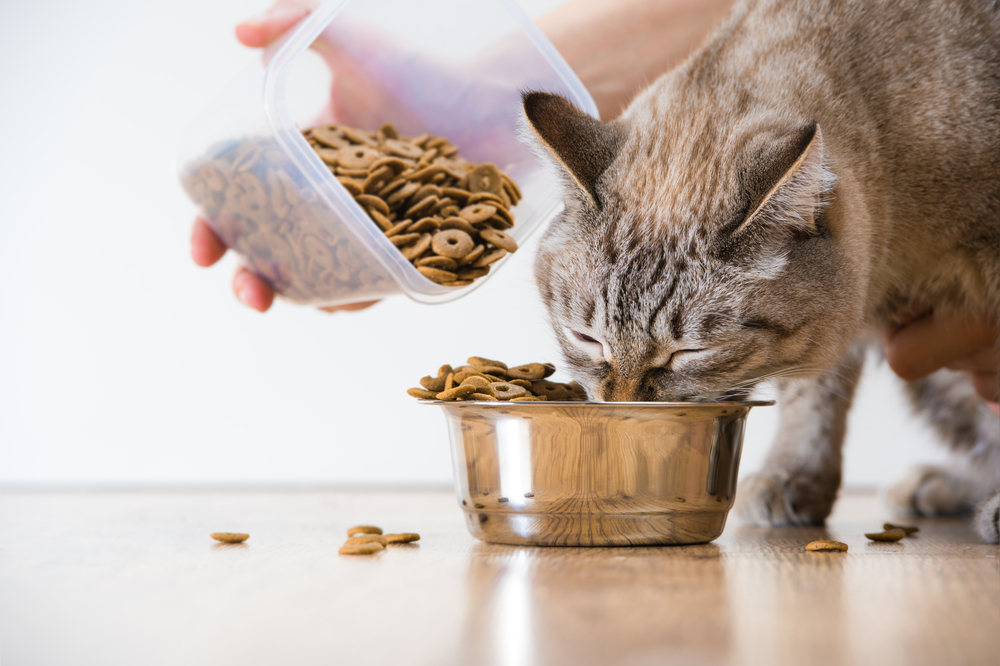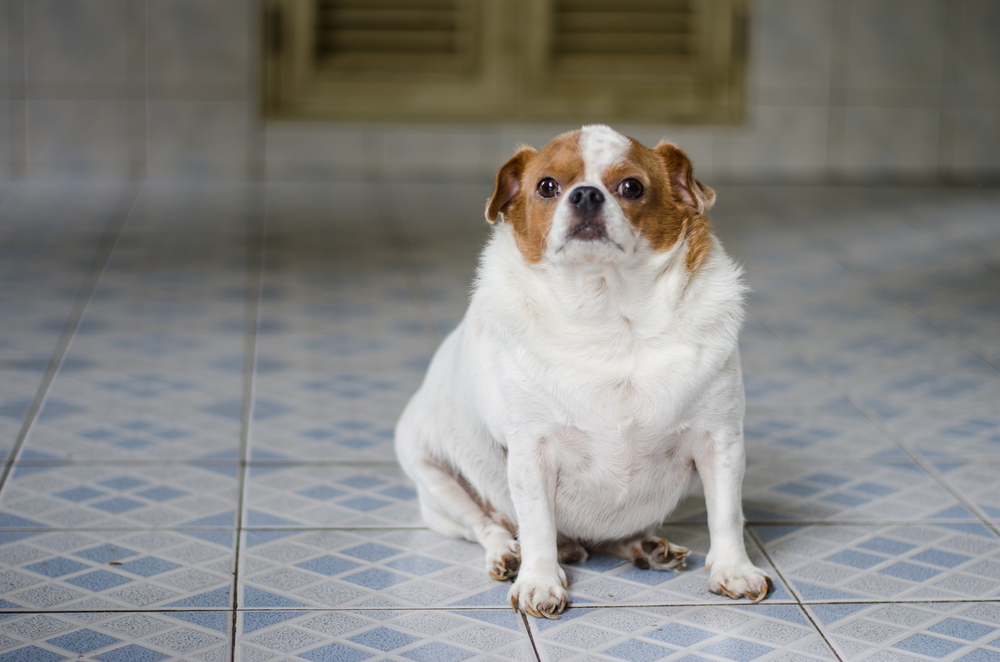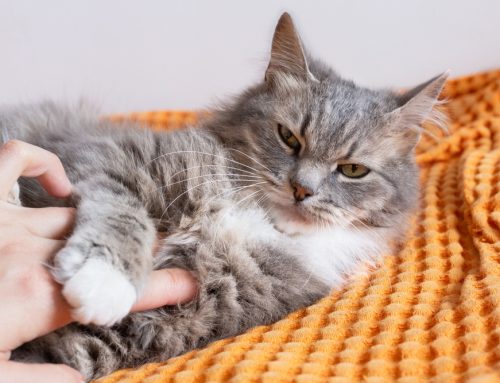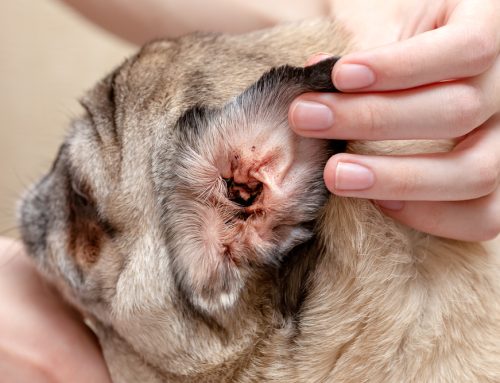American pets are facing a rising obesity epidemic, with veterinarians classifying an increasing number of pets as being overweight or obese each year. Most pet owners are unsure of their pet’s appropriate weight or how a healthy body shape should look. In addition, many pet owners equate generous treat giving with showing their furry pal love. Although a pet with a chubby, round face is undeniably cute, extra pounds can have major health implications that impact your four-legged friend’s quality of life and longevity. Our Countryside Veterinary Hospital team is raising awareness about this weighty issue by answering your frequently asked questions (FAQs) about pet obesity.
Question: How common is pet obesity?
Answer: The Association for Prevention of Pet Obesity (APOP) reports that 59% of dogs and 61% of cats are overweight or obese. Rather than following a standardized weight chart for people, our team assesses pets’ weight using a body condition scoring (BCS) system that takes into account individual variables such as body frame size. This system evaluates your pet’s weight based on a one through nine score. If your pet’s score is five, they are at an ideal weight. If their score is less than five, they are underweight, and if their score is greater than five, your pet is overweight.
Q: What are the health risks associated with pet obesity?
A: Excess body weight and fat are linked to serious health risks. Research shows obese pets live an average of two years fewer than their counterparts who are at a healthy weight, likely because excess weight makes pets susceptible to disease. An overweight pet has a greater propensity to develop arthritis, diabetes, heart and lung disorders, kidney disease, high blood pressure, and cancer. Fat cells may contribute to chronic systemic inflammation, paving the way for more serious diseases.
Q: How do I know if my pet is overweight or obese?
A: Although you may not know what your pet’s healthy weight should be, you can learn to use the same BCS scoring system that our Countryside Veterinary Hospital team uses to assess pets’ current weight. Our team can teach you how to use this tool, but to assess whether your pet is at a healthy, lean weight, consider these physical attributes:
- Easily palpable rib cage that is only slightly visible
- Visible waist tuck when viewed from the side
- Waist indentation when viewed from above
- No heavy fat deposits over the hips, shoulders, neck, and tail
Q: What is the first step to managing my pet’s weight?
A: The first step to managing your pet’s weight should be to have our Countryside Veterinary Hospital team perform your furry pal’s complete health and weight assessment. An overweight pet may struggle with underlying ailments that contribute to weight gain or health problems associated with excess weight. Our team can fully address your pet’s issues and formulate a safe, effective plan that includes frequent progress check-ins.
Q: What role does diet play in pet weight management?
A: Diet and nutrition are a pet’s weight-management foundation and your four-legged buddy’s overall health. Although you should calculate your pet’s daily calorie requirements, each pet’s metabolism varies greatly. To find the diet that is appropriate for your pet, our team considers all aspects of your furry pal’s lifestyle and makes adjustments according to how they respond. In most cases, reducing calories, cutting carbohydrates or fat, and increasing fiber are effective. To accomplish this goal, we often prescribe your pet a nutrient-dense but low-energy therapeutic diet rather than simply cutting back the amount of food you’re already feeding your furry pal.
Q: What role does exercise play in pet weight management?
A: Exercise is important for your pet’s health and is a necessary complement to a weight-loss program. Exercise helps strengthen your pet’s muscles, reduce inflammation, improve cardiovascular efficiency and endurance, and improve your furry pal’s mood and behavior issues. If your pet has arthritis, activity helps diminish their joint pain and improve their mobility.
Q: How can I safely exercise my obese pet?
A: Exercise can be tricky for obese pets, many of whom struggle with mobility issues, overheat easily, and tire quickly. Start slowly with a few short but brisk exercise sessions each day and gradually increase exercise intensity or duration. Most dogs can tolerate short, frequent walks. Encourage your cat to play or forage with toys and food puzzles. During extreme weather, enroll your dog for a few sessions at a local pet rehabilitation center. These facilities provide excellent indoor exercise opportunities without the outdoor weather risks.
Q: How quickly should my pet lose weight?
A: Gradual, steady progress is the most sustainable way to manage your pet’s weight. To help ensure your pet sheds the excess pounds and maintains their ideal weight, they should lose no more than 3% to 5% of their body weight each month. Rapid calorie cutting and weight loss may lead to muscle wasting and increased hunger. In addition, cats can develop potentially serious liver problems.
Q: What can I do if my pet is always hungry?

A: Your pet may feel hungry if you reduce the amount of food they eat or the total energy they consume too quickly. Gradually reduce the amount of food you give your pet so their metabolism can adjust. Doing so will also help prevent your furry pal from developing stomach upset. Feeding small, frequent meals or offering veterinarian-approved low-calorie treats throughout the day may also be an effective strategy. If your pet has a begging habit, try distracting them with an enjoyable activity such as a favorite toy or a walk, or a cuddle or grooming session.
Weight management is a lifelong process that requires a commitment to ensure your pet’s long-term health. Our Countryside Veterinary Hospital team can formulate a conservative, doable weight-loss plan for your overweight pet, and we’ll stand by you through the process. To initiate your four-legged friend’s journey to better health and mobility, schedule their weight-loss consultation.








Leave A Comment